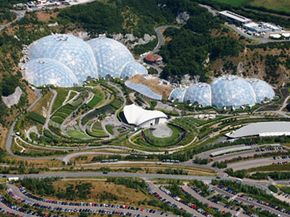Types of Greenhouses
Since greenhouses use the sun to create a warm environment for plants, when the temperature drops, there's less sun-generated heat in the greenhouse. For plants that need more heat than a greenhouse can provide naturally, heating systems are necessary to make up the difference. Greenhouses are divided into categories based on how much supplemental heat they need to produce in order to keep plants at a certain temperature.
Cold Houses and Cold Frames: Cold houses provide protection for plants, but the temperatures inside can still dip below freezing during the winter because they have no supplemental heat source. Cold houses can help start spring crops a few weeks early and extend the growing season in fall, but they're limited by the weather.
Advertisement
Cool Houses: Warmer than cold houses, cool houses keep plants above freezing and in a temperature range of between 45 to 50 degrees Fahrenheit (7 to 10 degrees Celsius) [source: Britannica Online Encyclopedia]. Keeping the temperature above freezing will protect frost sensitive plants, like geraniums and hibiscus, which would be impossible to keep year round in areas that experience freezing temperatures.
Warm Houses: A warm house will allow a broader range of plants, but requires slightly warmer temperatures too, around 55 degrees Fahrenheit (13 degrees Celsius). Although the temperature range doesn't support many tropical plants, some varieties of orchids and ferns can over-winter in a warm house environment.
Hot Houses: These greenhouses are designed to house tropical plants like caladium, dieffenbachia and gardenia, which need a temperature range of 60 degrees Fahrenheit (15.5 degrees Celsius) and higher. They require the most supplemental heat and insulation and can be expensive to maintain.
Conservatories: Conservatories are designed to display plants, not just maintain and propagate them. They often have finished floors, ornate window treatments and space for furniture. Window greenhouses and small tabletop greenhouses are also considered conservatories because they're used primarily for display.
In the next section, we'll take a look at some interesting styles of greenhouses, and you can see if any would work for your house.
